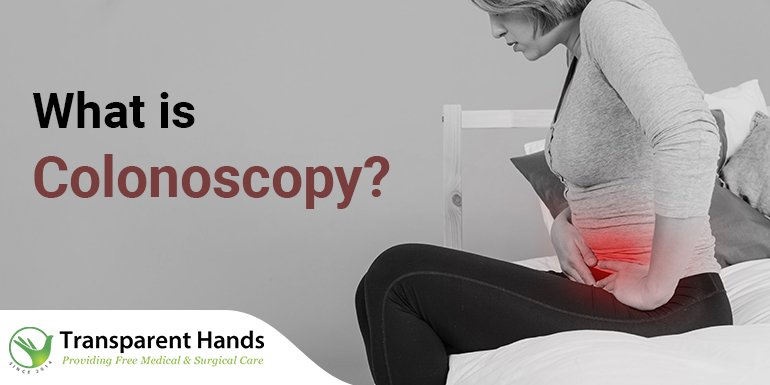What is Colonoscopy?

In the realm of medical diagnostics and preventive healthcare, the colonoscopy procedure occupies a significant position. A cornerstone of gastrointestinal health assessment, this procedure allows medical professionals to gain invaluable insights into the inner workings of the colon. In this comprehensive exploration, we delve into the multifaceted dimensions of the colonoscopy procedure, ranging from its methodology and significance to its various types, benefits, and post-procedure care.
Understanding the Colonoscopy Procedure
At its core, the colonoscopy procedure is a non-invasive medical examination that involves the insertion of a slender, flexible tube known as a colonoscope into the rectum and colon. Fitted with an advanced camera, the colonoscope enables physicians to visualize the inner lining of the colon in real-time. This procedure is instrumental in detecting and diagnosing a range of gastrointestinal conditions, from inflammation and ulcers to polyps and cancerous growths.
The colonoscopy procedure serves various purposes, including routine screenings for early disease detection, diagnosis of unexplained gastrointestinal symptoms, and monitoring the progression of certain conditions like inflammatory bowel disease (IBD).
Types of Colonoscopy Procedures
The colonoscopy procedure is not a one-size-fits-all approach; it encompasses various types tailored to specific medical objectives:
Diagnostic Colonoscopy: This type focuses on investigating symptoms, pinpointing the cause of gastrointestinal discomfort, and identifying potential health concerns. It often serves as a proactive approach to early detection of conditions like colorectal cancer.
Therapeutic Colonoscopy: Beyond diagnostics, the therapeutic colonoscopy involves interventions such as polyp removal, tissue biopsy, and the treatment of gastrointestinal bleeding. It offers an all-encompassing approach to diagnosis and treatment within a single procedure.
Types of Colonoscopy
While the traditional colonoscopy remains a gold standard, variations in the approach have emerged to suit different situations:
Flexible Sigmoidoscopy: A close relative of the colonoscopy, this procedure focuses on examining the lower part of the colon, specifically the rectum and sigmoid colon. It provides insights into conditions like rectal bleeding and inflammation.
Virtual Colonoscopy (CT Colonography): Representing a leap in medical technology, virtual colonoscopy involves computed tomography (CT) scans to create a three-dimensional image of the colon. This alternative offers a less invasive option for individuals who may be reluctant to undergo traditional colonoscopy.
Female Colonoscopy Procedure
The female colonoscopy procedure follows the same fundamental methodology as its counterpart for men. It involves the insertion of a thin, flexible tube known as a colonoscope into the rectum and colon. Fitted with a camera, the colonoscope allows healthcare professionals to visualize the inner lining of the colon, aiding in the detection and diagnosis of various gastrointestinal conditions.
Key Considerations for Female Patients
Pregnancy: Pregnant women may need to postpone a colonoscopy unless it’s deemed medically necessary due to potential risks. Healthcare providers carefully evaluate the situation to make informed decisions.
Menstrual Cycle: While the menstrual cycle doesn’t usually affect the procedure itself, some women may prefer scheduling the colonoscopy outside of their menstruation days for comfort and convenience.
Hormonal Changes: Hormonal fluctuations during the menstrual cycle can influence bowel habits. Discussing these patterns with healthcare providers ensures accurate interpretations of colonoscopy results.
Post-Procedure Care and Recovery
After a female colonoscopy procedure, the recovery process remains consistent with that of men. Mild discomfort or bloating may occur initially, but these symptoms typically subside quickly. Healthcare providers offer post-procedure care instructions, including dietary recommendations, activity levels, and any necessary medications.
Virtual Colonoscopy: A Modern Advancement
Virtual colonoscopy, also known as CT colonography, marks a significant advancement in the world of medical imaging. This technology harnesses the power of computed tomography to generate detailed, three-dimensional images of the colon. The procedure offers a less invasive alternative to traditional colonoscopy, making it an attractive option for those who may have reservations about the latter.
Post Colonoscopy: Navigating Aftercare
Following the completion of the colonoscopy procedure, patients may experience mild discomfort, bloating, or gas. However, these symptoms typically subside within a short span. Healthcare professionals provide patients with clear guidelines for post-procedure care, including dietary recommendations, activity levels, and any necessary medication.
EGD Colonoscopy: A Dual Perspective
The EGD colonoscopy, or esophagogastroduodenoscopy, delves into the upper gastrointestinal tract. It involves the insertion of a thin, flexible tube equipped with a camera through the mouth to examine the esophagus, stomach, and the beginning of the small intestine. This dual examination offers a comprehensive view of the entire digestive system, from the esophagus to the colon.
Conclusion
In the continuum of healthcare and medical advancements, the colonoscopy procedure stands as a pillar of modern diagnostics. From its fundamental methodology to its various types and applications, this procedure plays an integral role in safeguarding gastrointestinal health. As medical technology continues to evolve, options like virtual colonoscopy offer new avenues for those seeking alternative methods of examination. Regardless of the chosen approach, the ultimate objective remains the same: early detection, accurate diagnosis, and the proactive management of gastrointestinal conditions. It is through this comprehensive approach that medical professionals pave the way for enhanced well-being and a healthier future for individuals around the world.










Leave Your Comments